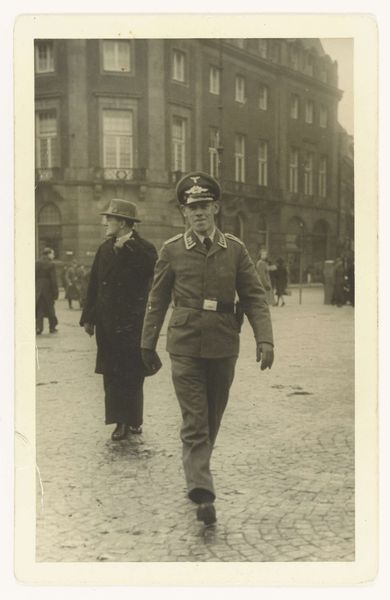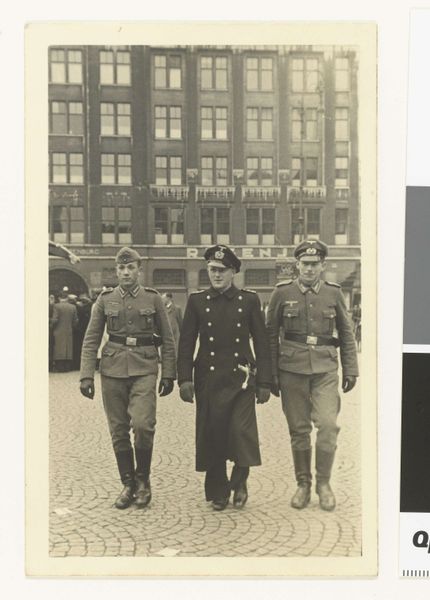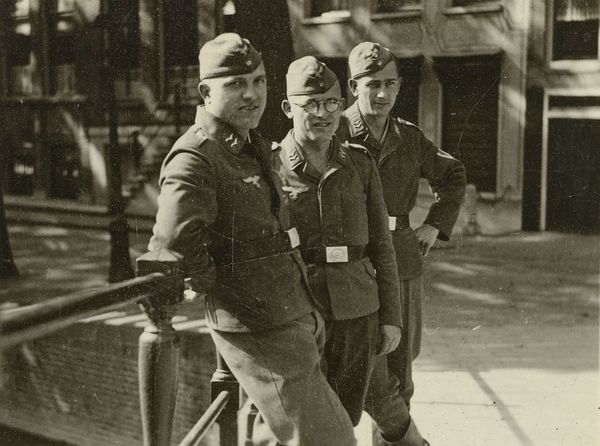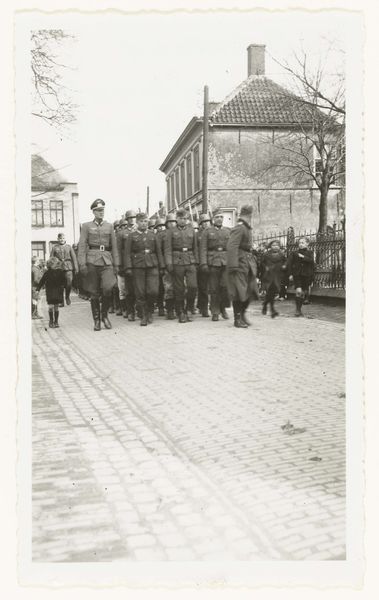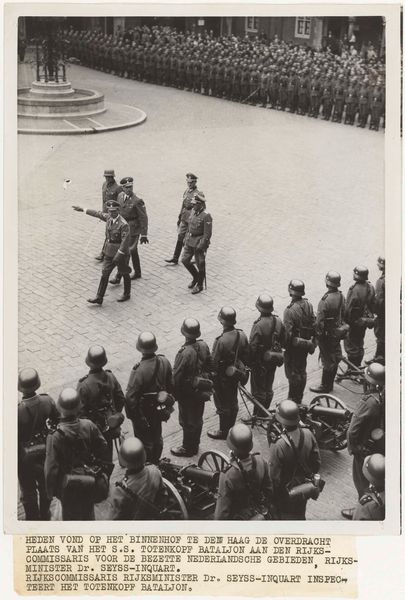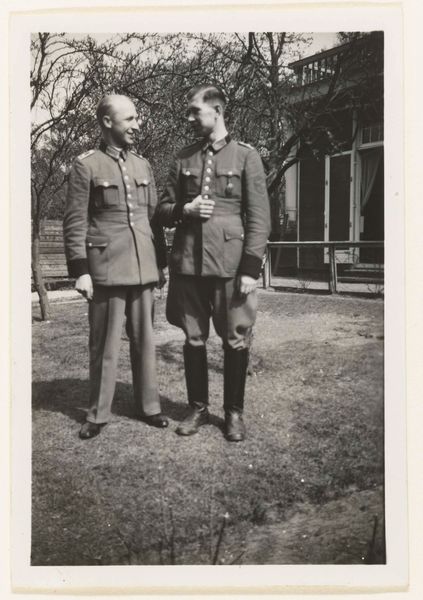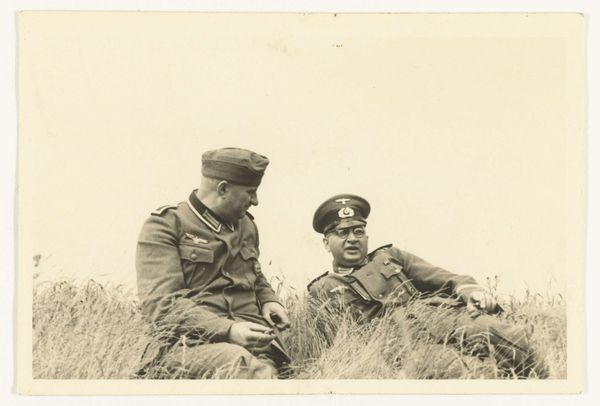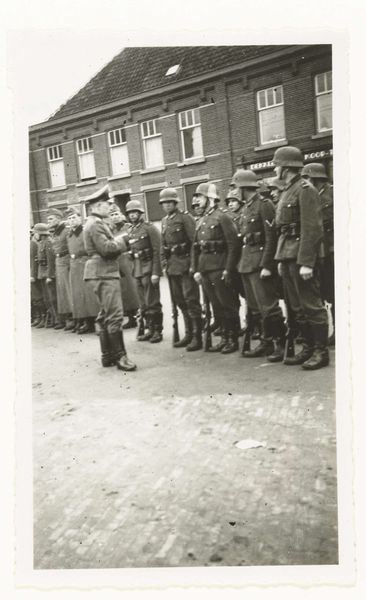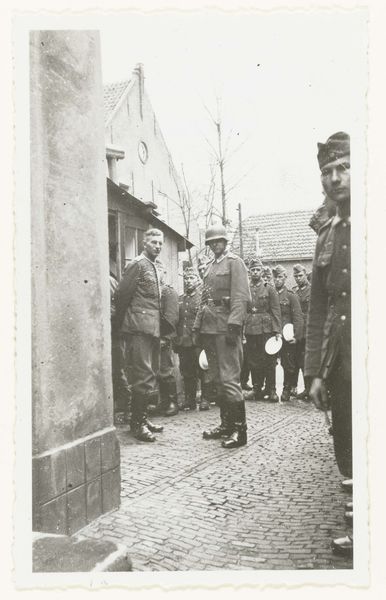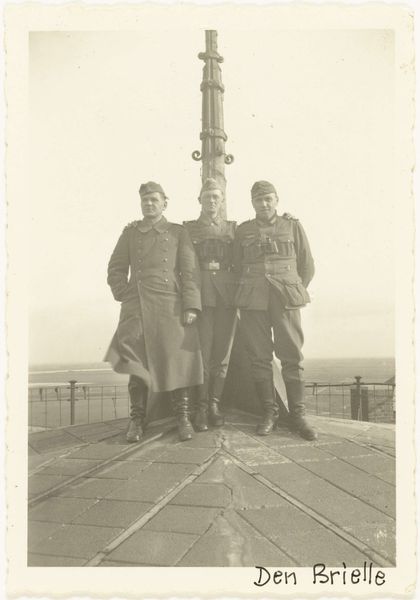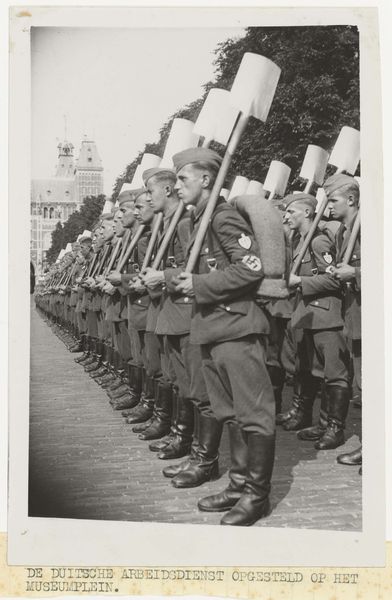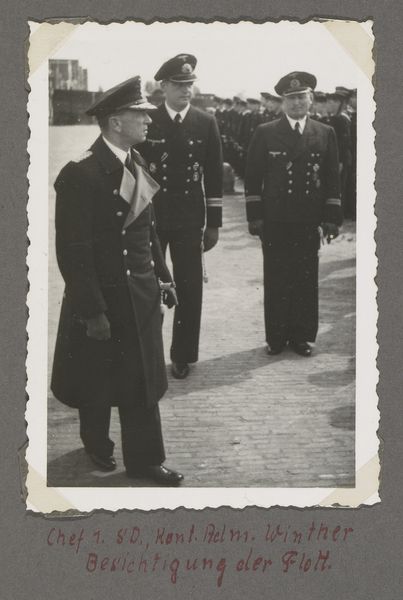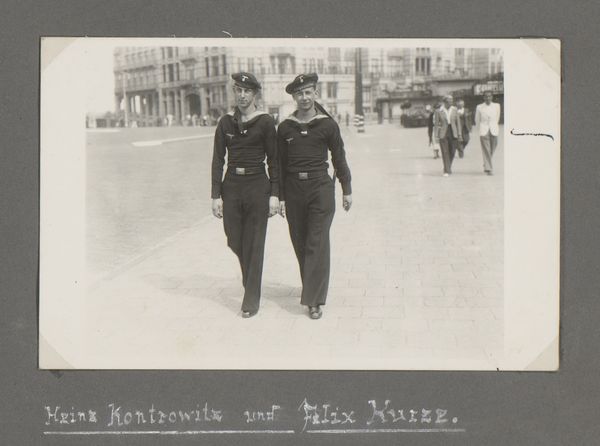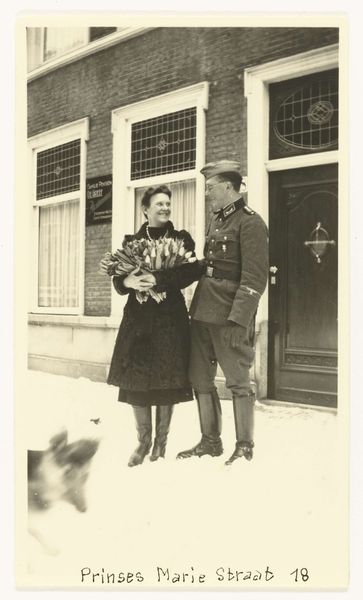
Dimensions: height 14 cm, width 9 cm
Copyright: Rijks Museum: Open Domain
Curator: This gelatin silver print, entitled "Twee Wehrmachtsoldaten," meaning "Two Wehrmacht Soldiers," was captured in 1941 by Foto Atelier and now resides in the Rijksmuseum. The tonal range alone gives this image a very sombre feeling, would you agree? Editor: Absolutely, there’s a stark, unsettling quality to the grays, almost bleached in some areas. It contributes to the stiff posture of the two men walking down the cobblestone street; the backdrop of city buildings feels oppressive and adds to the mood of war hanging heavy in the air. I'd love to examine how that gelatine affected that specific tone! Curator: Notice how the composition guides the viewer’s eye directly to the soldiers, dominating the space; one in a peaked cap with visible wing insignia and the other in the side cap of the army uniform. Their uniforms and stern faces contribute to a powerful and rather chilling portrait. The architecture is not in focus so the subjects’ dominance is highlighted further by use of composition. Editor: Speaking of uniforms, I am thinking about the textiles and labor implied in producing them and even that cobblestone street! What kind of maintenance was needed for such large scale infrastructure for this image to even exist? The social networks and economy of war here, aren't explicitly present, but profoundly involved. Curator: Indeed. What I see reflected so strongly is the propaganda element of the era; but by focusing on these men, rather than a victorious image, what impact did the photographer want to have with this portrait of Nazi occupation? Was it supposed to embolden or invoke? Editor: That is certainly an interpretation worth considering. And looking closer, this photo atelier studio… their choice of gelatin silver as the printing material, I can't help wonder what sort of material constraints influenced its availability and the ease of mass-production required in a time of conflict. Curator: This detailed photograph reveals the structure of life during that difficult period, as well as highlights what a talented artist was able to express by harnessing compositional conventions. The photo provides the opportunity to appreciate that the maker utilized form to elicit deeper insight. Editor: By questioning these very material foundations, the physical and economic conditions enabling such images, we uncover much more regarding the complexities of representing historical narratives. It helps remind that even potent images can belie so many hidden histories within its own making.
Comments
No comments
Be the first to comment and join the conversation on the ultimate creative platform.
